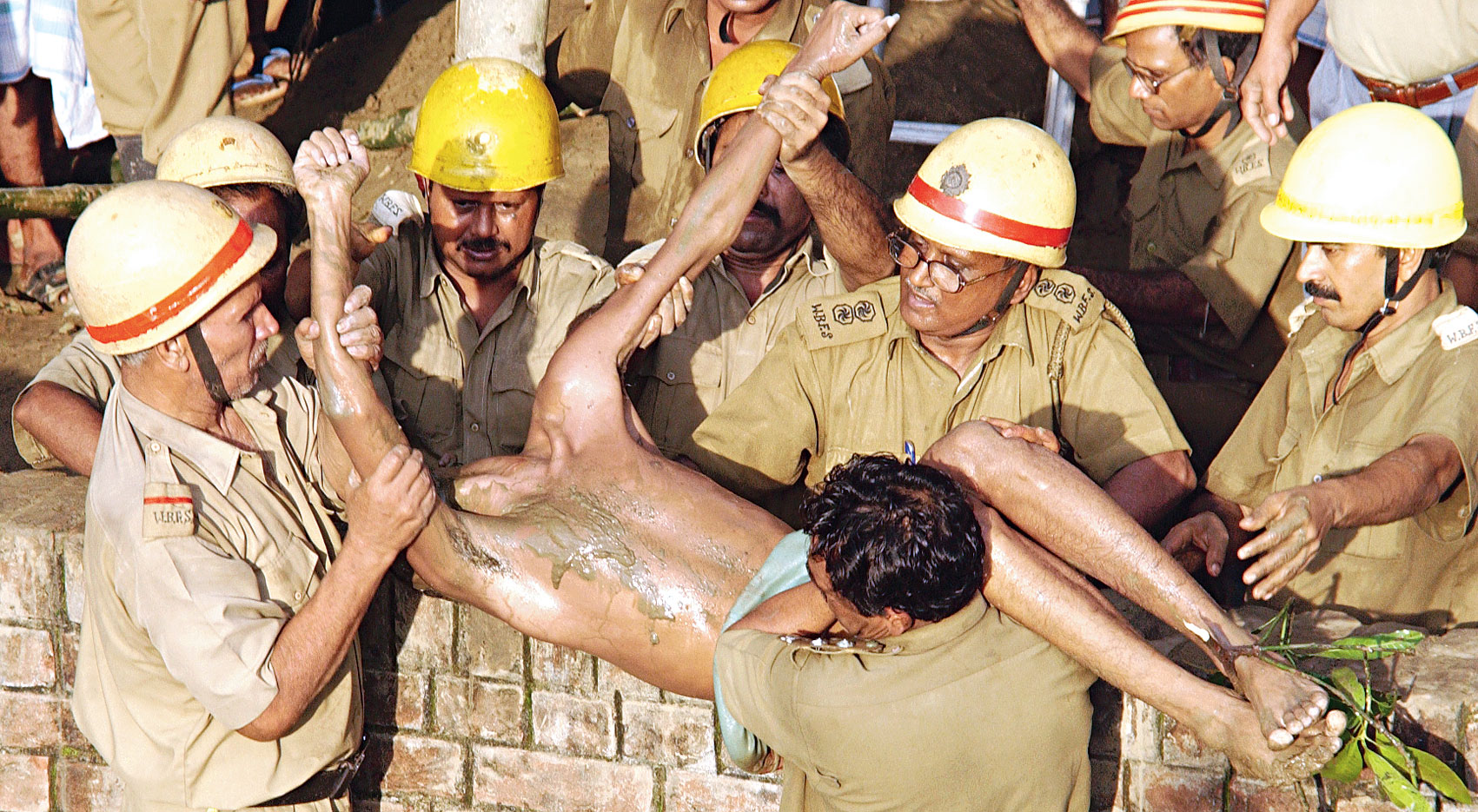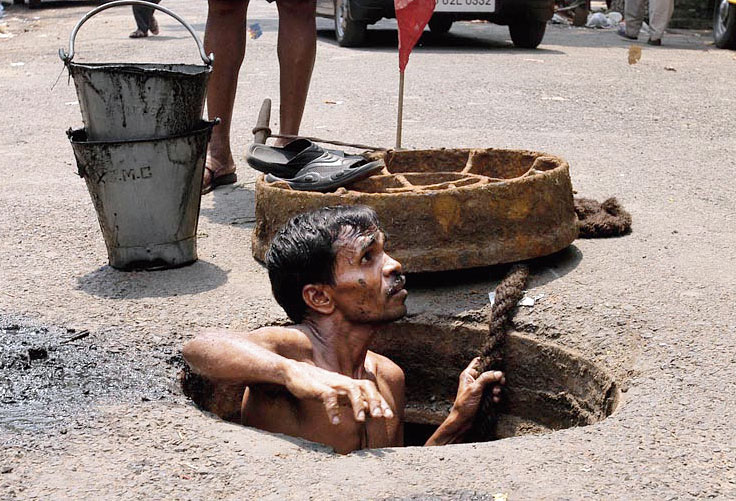A recent manifesto draws attention to a community that is hardly spoken about.
In the run-up to the Lok Sabha elections, Safai Karmachari Andolan, an organisation working for the rights of manual scavengers, released its manifesto on April 4 in New Delhi, demanding a life of dignity and safety.
Manual scavenging is the illegal practice of cleaning, carrying and disposing of human excreta from dry latrines or sewers. Cleaning sewers can be fatal. It rests on the pillar of two of the biggest evils of Indian society: caste and gender disparity. Most scavengers belong to the lowest castes.
A 1993 Parliament Act banned the employment of manual scavengers and the construction of dry latrines. A 2013 Parliament Act reiterated the end to scavenging. Yet the problem persists.
According to the 2011 census, there are 26,07,612 dry latrines in India. As opposed to toilets with flush, these are toilets in which the excreta collect in containers below, which are then cleaned manually.
An overwhelming majority of the manual scavengers who clean excreta are women. The Safai Karmachari Andolan puts the number at 98 per cent.
The scavengers virtually remain untouchable. The young still find it difficult to gain admission into institutions, or any other life.
The manifesto, written after meetings and surveys conducted over 10 states, demands:
- Freedom from the shackles of caste, patriarchy, and ensure the recovery, reconstruction, and reclamation of the fundamental right of manual scavengers to live with dignity.
- A Right to Life (RL-21) card to ensure direct and free access to education, health care, dignified employment and livelihoods.
- This also includes other benefits and schemes as per the fundamental rights given to all citizens of India under Article 21 of the Indian Constitution.
- One per cent of the Union budget to be exclusively allocated for the welfare of manual scavengers, including their liberation and rehabilitation benefits. A separate ministry to be created for their release and rehabilitation headed by the Prime Minister.
- Pension of Rs 6,000 per month to all safai karmacharis above 55 years of age, direct access with free admission for their children using the RL-21 card into any institution and hostel (government, aided, private and foreign institutions) of their choice from primary to the highest level of education.
- Direct and free access to any hospital (government or private) of their choice by using the RL-21 card for all their medical needs including the most specialised medical intervention.
- Free water and sanitation facilities for every safai karmachari household.
- Inclusion of manual scavenging as an offence under the National Crime Records Bureau. There have been 31 documented sewer deaths in the last three months, Safai Karmachari Andolan says.
- Increasing the compensation to Rs 1 crore in case of sewer deaths.
- Abolition of a contractual system that results in the exploitation of workers.
- A special session of Parliament to end manual scavenging by humans, rehabilitation of sanitation workers, and for putting an end to sewer deaths.
- An apology from the Prime Minister of India for the historical injustice done to people engaged in manual scavenging.
The highest number of manual scavengers were reported by the states of Maharashtra, Madhya Pradesh and Uttar Pradesh. According to the organisation website, Calcutta has 6,739 dry latrines; North and South 24 Parganas 30,839 and 30,900 respectively. The Indian Railways is one of the worst offenders, employing manual scavengers to clean the tracks of human excreta.












